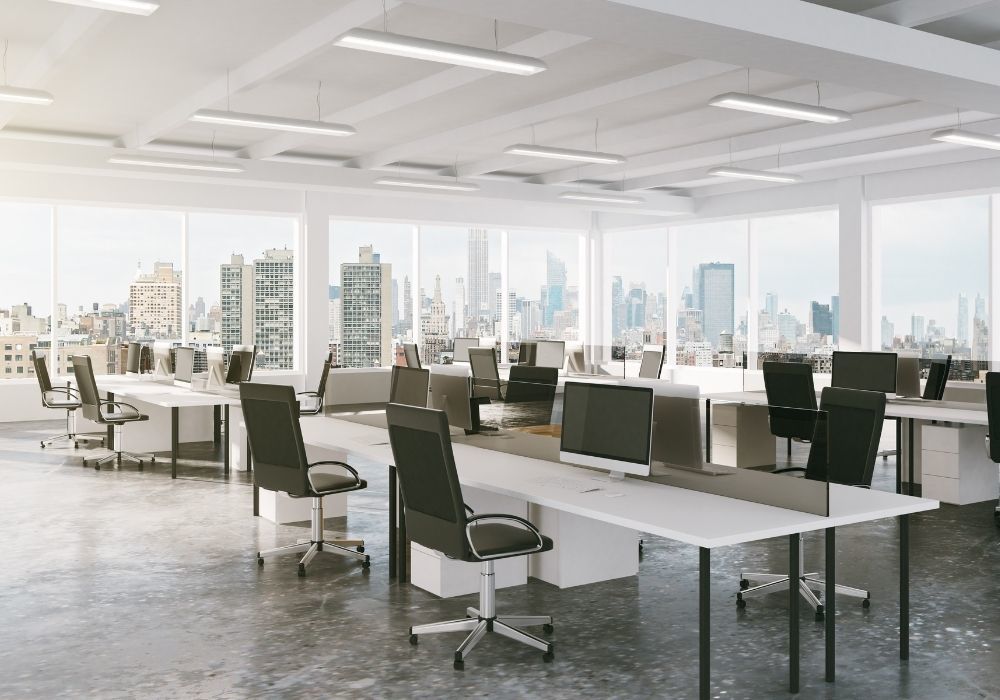The Return to Work
Depending on your location, you may have just returned to working in person, or you might be looking forward to the light at the end of a working from home tunnel. As organisations plan and enact their return to the office in 2021, what can employees and employers expect from a logistical and security perspective?
Hot Desking and Co-Working
There’s no question that returning to the office will look different now. As office spaces evolve to the new normal, the practice of sharing desks may become more widespread than ever, says Ian Worthy, Principal of Strategy at global office-design firm Unispace.
While there may be some hesitation around shared workspaces, Worthy suggests that there’s going to be a “dramatic” change in how people will work in the future and organisations need to have the willingness to embrace this concept.
“Our research suggests up to 90 per cent of people want to continue working from home at least one or two days a week,”
“With this new need for flexibility, it’s going to be hard for organisations to give people their own dedicated place to work, given there’s not going to be the same capacity of people in the office”, Worthy continued.
This may spark a third wave of the co-working evolution, according to Julian Waters-Lynch, entrepreneurship and innovation lecturer at the RMIT University School of Management.
“I think we might see a third wave of co-working because there’s going to be a new surge of people who work from home and for whatever reason find that’s not optimal. I think the third wave will reanimate where co-working started: meeting the social needs of home-based workers”.
Worthy also added that employees are indicating that they are more likely to limit their time in the office to team-based activities, collaboration learning and be immersed in the social aspects of the workplace. He doubts that employees will come back just to work individually.
While the concept of hot desking and co-working makes practical sense for both employees and employers in the new normal, strict cleaning measures and processes should remain top priority, for peace of mind and for the workplace to operate successfully.
Smart Offices
With touch-free biometrics set to become the norm for access control, smart offices will continue to evolve post pandemic.
Worthy explains that simple smart meters may be the first step in establishing a smart office. Used to manage a hot desk’s status, a series of lights would indicate whether it’s reserved, in use or in need of cleaning.
Tica Hessing, Human Geographer from global real estate services firm Cushman & Wakefield, also believes that the future is intelligent buildings,
“Embedded analytics will enable more efficient management of energy use and occupancy,” she says. For example, “In the short term, occupiers can temporarily shut down floors that aren’t being used; and in the longer term, they can ‘right-size’ their real-estate requirements for a distributed workforce.”
Further investment in virtual solutions will be key as office buildings evolve to a hybrid space. Redesigning the office so that no matter where employees are in the world, they still feel integrated in the office experience will be the next biggest challenge for employers.
The Role of Security
With the Zoom boom, the NBN increasing bandwidth and office IT systems having to adapt to workers suddenly logging in almost entirely remotely, we’ve seen technology step up to the plate. And it’s likely to play a more prominent role as the post-COVID-19 office evolves, Hessing says.
“The value of intelligent buildings and the Internet of Things has become clear during this period of remote working. There is likely to be increased investment in virtual solutions, such as remote-operated security, drones for building viewings, deployment of cleaning robots and virtual receptionists.
“Biometric security and space-management systems could allow no-touch access and circulation through buildings, workspaces and meeting rooms. Technology could enable ‘touchless offices’, where access is powered through biometrics and voice.”
Hessing sounds a note of caution to IT managers and heads of security, with hybrid workspaces becoming a reality, it’s essential that physical and cyber concerns are addressed. After COVID-19 exposed the gaps in IT infrastructure, this should remain a top priority.
Whether it’s implementing a zero-trust strategy, multi-factor authentication or simply re-thinking physical asset management, levelling up protection will be key to mitigating risk in a flexible work environment.
Investments in security across all facets will also reassure employees that they are returning to a safe and secure workplace.
Parts of this article originally appeared on our sister event, Total Facilities’ website here.
To read more articles like this or to stay up to date with the industry, subscribe to the Security Focus Newsletter and receive monthly updates.
-
Stay up to date with the latest news and Security updates.
- Subscribe

